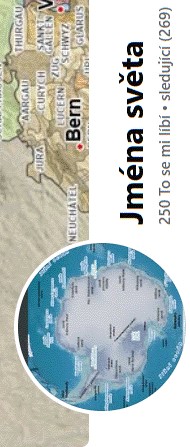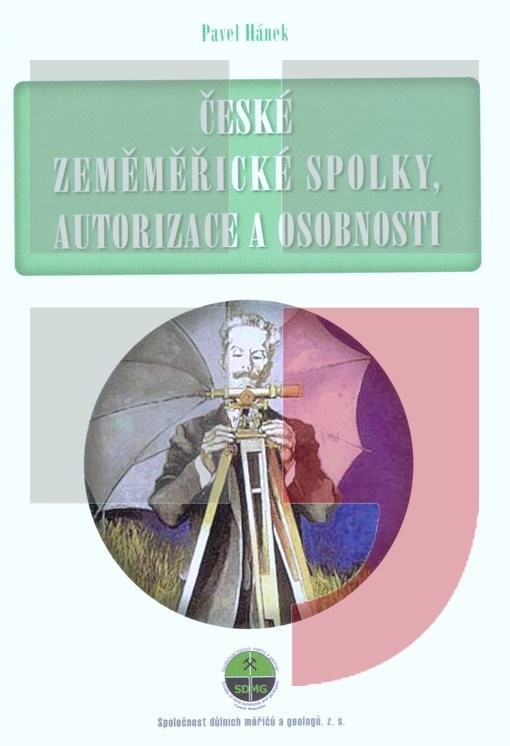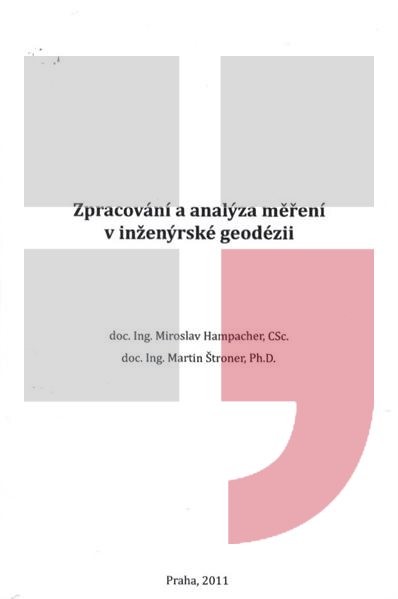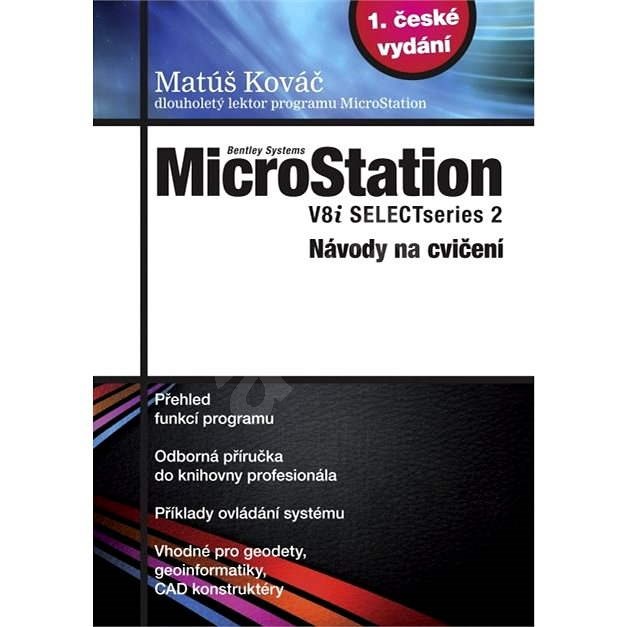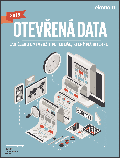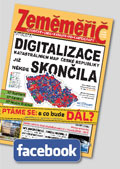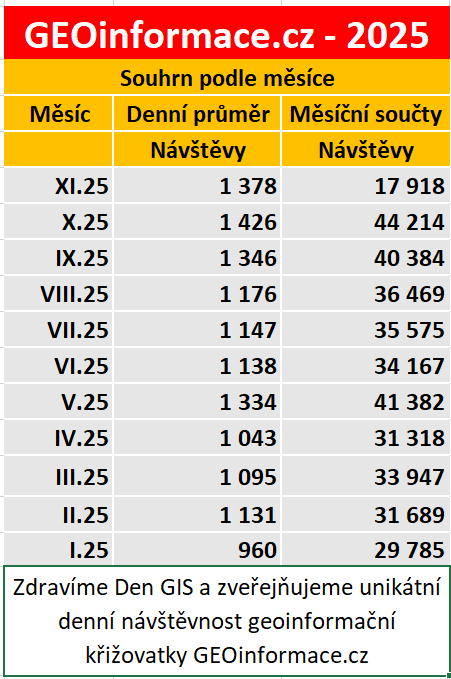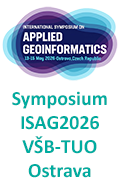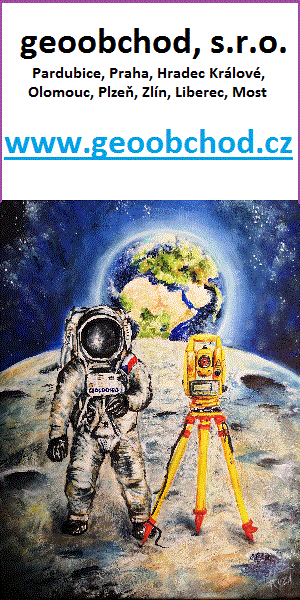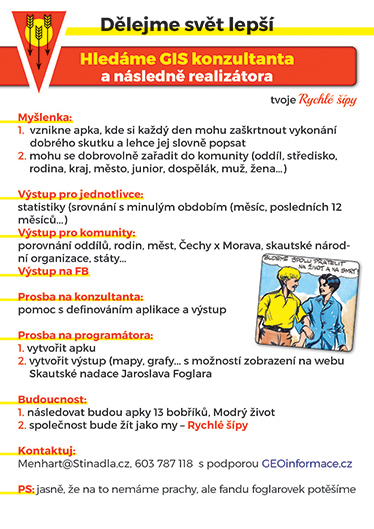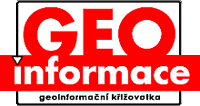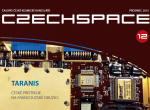zprávy
zdroje zpráv:VPoo4_2015
17.12.2015 7:14 ČÚZK - předpisy a opatření /Urady/Katastralni-urady/Katastralni-urady/Katastralni-urad-pro-Jihomoravsky-kraj/Katastralni-pracoviste/KP-Znojmo/Uredni-deska/Oznameni-a-jina-uredni-sdeleni/VPoo4_2015Nová generace produktů GEPRO
17.12.2015 7:00 Česká asociace pro geoinformace Kolektivní člen CAGI, společnost GEPRO, uvolnila novou generaci svých produktů. Verzi 13 všech produktů můžete stahovat z webovéhoMapa kvartérního pokryvu 1 : 500 000 (GEOČR500)
17.12.2015 1:00 Cenia - Katalog metadat ČR - INSPIRE WMS služba zobrazuje nejdůležitější typy kvartérních sedimentů, tj. eolické, říční, ledovcové a organické. Z říčních sedimentů jsou zvlášť vyčleněny současné nivy, ohrožené možnými záplavami za povodní. Ledovcové uloženiny se vyskytují v okrajové oblasti severních Čech a severní Moravy. Z organických sedimentů jsou rašeliny vázány na horské oblasti, slatiny na nižší nadmořské výšky. Travertiny členíme na karbonáty termálních mineralizovaných vod a karbonáty vysrážené ze studených vod prostých.Mapa radonového indexu 1 : 500 000 (GEOČR500)
17.12.2015 1:00 Cenia - Katalog metadat ČR - INSPIRE WMS služba mapy radonového indexu geologického podloží 1 : 500 000. Popisuje převažující radonový index geologického podloží: 1. Nízký (mezozické a terciérní sedimentární horniny), 2. Přechodný (kvartérní sedimentární horniny), 3. střední (metamorfované horniny a paleozoické sedimenty), 4. Vysoký (magmatické horniny, s výjimkou prevariských granitoidů – střední index), 5. Tektonické linie, 6. Hranice krajůGeologická mapa České republiky 1 : 500 000 (GEOČR500)
17.12.2015 1:00 Cenia - Katalog metadat ČR - INSPIRE WMS služba zobrazuje geologickou mapu České republiky v měřítku 1 : 500 000.Oznámení o vyhlášení výběrového řízení na služební místo ředitel odboru personálního
17.12.2015 0:00 Státní pozemkový úřadVelmi rychlé a přesné měření technologických zařízení
16.12.2015 20:30 GIS-STAVINVEX Požadavek zákazníka: Dodání komplexního 3D modelu skipové jámy pro následnou projekční činnost, tak aby byl kompatibilní s jeho CAD systémem. Jakákoliv neplánovaná odstávka vysoké pece […]Družice Galileo jsou ve startovací zóně
16.12.2015 15:29 Český Kosmický PortálDružice Galileo 11 a 12 jsou na startovací rampě, připojené ke své raketě Sojuz - a připravené na start tento týden.
Družice Galileo jsou ve startovací zóně
16.12.2015 15:29 Český Kosmický PortálDružice Galileo 11 a 12 jsou na startovací rampě, připojené ke své raketě Sojuz - a připravené na start tento týden.
Watch Galileo launch
16.12.2015 15:10 ESA Navigation
See the launch of Galileo satellites 11 and 12 on Thursday 17 December. Streaming starts at 11:30 GMT (12:30 CET)
Watch Galileo launch
16.12.2015 15:10 ESA Navigation
See the launch of Galileo satellites 11 and 12 on Thursday 17 December. Streaming starts at 11:31 GMT (12:31 CET)
20151216-výběrová řízení-ředitelé KP Příbram, Ml. Boleslav, Kolín, Benešov
16.12.2015 12:16 ČÚZK - předpisy a opatření /Aktuality-resort/2015/20151216-vyberova-rizeni-reditele-KP-Pribram,-Ml-B20151216-výběrová řízení-ředitelé KP Příbram, Ml. Boleslav, Kolín, Benešov
16.12.2015 12:16 ČÚZK /Aktuality-resort/20151216-vyberova-rizeni-reditele-KP-Pribram,-Ml-B20151216-výběrová řízení-ředitelé KP Příbram, Ml. Boleslav, Kolín, Benešov
16.12.2015 12:16 ČÚZK - předpisy a opatření /Aktuality-resort/20151216-vyberova-rizeni-reditele-KP-Pribram,-Ml-B20151216-výběrová řízení-ředitelé KP Příbram, Ml. Boleslav, Kolín, Benešov
16.12.2015 12:16 ČÚZK /Aktuality-resort/2015/20151216-vyberova-rizeni-reditele-KP-Pribram,-Ml-BDne 11. prosince 2015 převzal
16.12.2015 12:00 Plzeňský kraj Dne 11. prosince 2015 převzal Plzeňský kraj dílo Doplnění účelové mapy povrchové situace Digitální technické mapy Plzeňského kraje 2015. Více informací je k dispozici zde.Dne 11. prosince 2015 převzal
16.12.2015 12:00 Plzeňský kraj Dne 11. prosince 2015 převzal Plzeňský kraj dílo Doplnění účelové mapy povrchové situace Digitální technické mapy Plzeňského kraje 2015. Více informací je k dispozici zde (http://www.plzensky-kraj.cz/cs/clanek/doplneni-ucelove-mapy-povrchove-situace-digitalni-technicke-mapy-plzenskeho-kraje-2015-prevza).2015-2016: Shaping the Future of European GNSS
16.12.2015 10:02 European GNSS AgencyAs 2015 draws to a close, we find ourselves reflecting on the past year – the challenges and the accomplishments – while also looking at what’s ahead.
2015 marked a very important year for the Agency and for the entire European GNSS community. Both of Europe’s GNSS programmes – Galileo and EGNOS – saw substantial progress. For Galileo 2015 was a record-breaking year, with the launch of six satellites. This, in addition to a ground segment already nearing completion, Galileo’s future looks brighter than ever.
In anticipation for the launch of Initial Services, the GSA has been busy preparing the user segment. For example, we recently launched ‘Fundamental Elements’, an R&D funding mechanism supporting the development of chipsets and receivers. This is an important part of the GSA’s overall strategy of market uptake, with the aim of facilitating the development of EGNOS and Galileo applications across different sectors of the economy.
Likewise, EGNOS continues to provide a solid performance – and with V2 and V3 ready for launch, this performance will only be further enhanced in the coming months. From the user perspective, we are continuing to see increases in EGNOS adoption across numerous market segments, including maritime and rail. In the aviation sector, for example, the launch of LPV 200 has seen more and more airports and aircraft operators choosing to become EGNOS-enabled. Thanks to our continued dialogue with a range of stakeholders, we fully expect this trend to continue.
Of course the success of both Galileo and EGNOS is heavily dependent on our ability to convert this technology into tangible benefits for the end user. For this reason, the GSA remains committed to supporting R&D activities. Along this line, we recently announced the results of the second call for Galileo applications under the Horizon 2020 programme for research and innovation. Nearly EUR 25M in funding went to 13 projects, covering transport, surveying, location-based services, agriculture, emergency services and other professional applications.
Turning towards the future, I am honoured to have been re-elected to serve as the Executive Director of the GSA for another four years. In these upcoming years we will put into practice all that we have been preparing for. In 2016 the GSA will finalize the contract for the future Galileo service provider and by 2017 the Agency will be fully responsible for the service and operations of Galileo.
We enter the New Year in the midst of an exciting time for the GNSS market. As indicated in the GSA’s 2015 GNSS Market Report, which has become the industry reference, today there are more than 4 billion devices using GNSS services, and that number is expected to triple by 2023. The sector is estimated to grow at more than 8% each year until at least 2019. With all this potential for GNSS – and in particular European GNSS – the GSA is confident that together with the European GNSS community, we will be able to harness this technology and translate it into jobs, business opportunities and economic sustainability for the benefit of all European citizens.
Best wishes for a happy and fruitful 2016.
Media note: This feature can be republished without charge provided the European GNSS Agency (GSA) is acknowledged as the source at the top or the bottom of the story. You must request permission before you use any of the photographs on the site. If you republish, we would be grateful if you could link back to the GSA website (http://www.gsa.europa.eu).

Staň se Ježíškem 3
16.12.2015 9:07V letošním roce jsme nejenom sbírali plyšáky, ale rovněž jsme se zapojili do podpory dětí s autismem. V rámci akce “Staň se Ježíškem 3” Základní školy Štolcova v Brně, která se věnuje právě autistickým dětem, jsme pořídili několik dárků a ty jsme nadělili těmto dětem. V úterý 14.12.2015 jsme měli možnost se účastnit školní besídky, kde žáci vystoupili a dárky si rozbalili. Pro všechny to byl velký zážitek. Pokud byste se rádi něco dozvěděli o autismu či chtěli školu rovněž podpořit, informace najdete na www.proaut.cz

VPOO11_2015
16.12.2015 8:46 ČÚZK - předpisy a opatření /Urady/Katastralni-urady/Katastralni-urady/Katastralni-urad-pro-Jihomoravsky-kraj/Katastralni-pracoviste/KP-Znojmo/Uredni-deska/Oznameni-a-jina-uredni-sdeleni/VPOO11_2015Oznámení o zkrácení úředních hodin dne 31.12.2015
16.12.2015 7:45 ČÚZK - předpisy a opatření /Urady/Katastralni-urady/Katastralni-urady/Katastralni-urad-pro-Vysocinu/O-uradu/Aktuality/Informace-o-zkraceni-urednich-hodin-23-12-2015Oznámení o zkrácení úředních hodin dne 23.12.2015
16.12.2015 7:45 ČÚZK /Urady/Katastralni-urady/Katastralni-urady/Katastralni-urad-pro-Vysocinu/O-uradu/Aktuality/Informace-o-zkraceni-urednich-hodin-23-12-2015Oznámení o zkrácení úředních hodin dne 31.12.2015
16.12.2015 7:45 ČÚZK /Urady/Katastralni-urady/Katastralni-urady/Katastralni-urad-pro-Vysocinu/O-uradu/Aktuality/Informace-o-zkraceni-urednich-hodin-23-12-2015Oznámení o zkrácení úředních hodin dne 23.12.2015
16.12.2015 7:45 ČÚZK - předpisy a opatření /Urady/Katastralni-urady/Katastralni-urady/Katastralni-urad-pro-Vysocinu/O-uradu/Aktuality/Informace-o-zkraceni-urednich-hodin-23-12-2015VUV oblasti povrchových vod využívaných ke koupání
16.12.2015 1:00 Cenia - Katalog metadat ČR - INSPIRE Oblasti povrchových vod využívaných ke koupáníMapa kvartérního pokryvu 1 : 500 000 (GEOCR500)
16.12.2015 1:00 Cenia - Katalog metadat ČR - INSPIRE WMS služba zobrazuje nejdůležitější typy kvartérních sedimentů, tj. eolické, říční, ledovcové a organické. Z říčních sedimentů jsou zvlášť vyčleněny současné nivy, ohrožené možnými záplavami za povodní. Ledovcové uloženiny se vyskytují v okrajové oblasti severních Čech a severní Moravy. Z organických sedimentů jsou rašeliny vázány na horské oblasti, slatiny na nižší nadmořské výšky. Travertiny členíme na karbonáty termálních mineralizovaných vod a karbonáty vysrážené ze studených vod prostých.Czechspace 12
15.12.2015 22:56 Česká kosmická kancelářVyšlo 12. číslo časopisu Czechspace, ve kterém naleznete informace o událostech v české kosmonautice druhé poloviny roku 2015. Kromě pravidelných rubrik, je v tomto čísle několik zajímavých rozhovorů s osobnostmi, působících v různých odvětvích kosmonautiky.
Danish Road Directorate Employs Digital Design and Construction to Improve Collaboration and Save Costs
15.12.2015 22:12 Bentley SystemsKeystone Engineering's Innovative Design Delivers the First Commercial Offshore Windfarm in U.S.
15.12.2015 22:06 Bentley SystemsGalileos in the zone for launch
15.12.2015 16:42 ESA Navigation
Galileos 11 and 12 are on the launch pad, attached to the top of their Soyuz rocket in readiness for this week’s launch.
Galileos in the zone for launch
15.12.2015 16:42 ESA Navigation
Galileos 11 and 12 are on the launch pad, attached to the top of their Soyuz rocket in readiness for this week’s launch.
Kosmonaut ESA Tim Peake začal šestiměsíční pobyt na ISS
15.12.2015 15:26 Český Kosmický PortálKosmonaut ESA Tim Peake, astronaut NASA Tim Kopra a ruský pilot Jurij Malenčenko dorazili na Mezinárodní kosmickou stanici. Stalo se tak šest hodin po startu v 11:03 h GMT dne 15. prosince 2015.
Kosmonaut ESA Tim Peake začal šestiměsíční pobyt na ISS
15.12.2015 15:26 Český Kosmický PortálKosmonaut ESA Tim Peake, astronaut NASA Tim Kopra a ruský pilot Jurij Malenčenko dorazili na Mezinárodní kosmickou stanici. Stalo se tak šest hodin po startu v 11:03 h GMT dne 15. prosince 2015.
Oznámení o změně úředních hodin pro geodety
15.12.2015 14:15 ČÚZK /Urady/Katastralni-urady/Katastralni-urady/Katastralni-urad-pro-Ustecky-kraj/Katastralni-pracoviste/KP-Decin/O-uradu/Aktuality/Oznameni-o-zmene-urednich-hodin-pro-geodetyOznámení o změně úředních hodin pro geodety
15.12.2015 14:15 ČÚZK - předpisy a opatření /Urady/Katastralni-urady/Katastralni-urady/Katastralni-urad-pro-Ustecky-kraj/Katastralni-pracoviste/KP-Decin/O-uradu/Aktuality/Oznameni-o-zmene-urednich-hodin-pro-geodetyDeal sealed for new Sentinel-1 satellites
15.12.2015 14:00 ESA Observing the Earth
ESA has ensured the continuation of the Sentinel-1 Earth observation satellite series for Europe’s Copernicus environmental programme by ordering two more satellites.
The €400 million contract was signed today with Thales Alenia Space of Italy to build Sentinel-1C and -1D.
Výsledek veřejné zakázky – program BETA Technologické agentury ČR
15.12.2015 12:15 CEDA Maps a.s. Praha, 15. prosince 2015 – S potěšením bychom chtěli oznámit, že naše společnost, ve spolupráci s Centrem dopravního výzkumu v.v.i., byla vybrána jako nejvhodnější řešitel veřejné zakázky programu BETA Technologické agentury ČR. Ve skutečnosti se jedná o výzkumnou potřebu Ministerstva dopravy ČR a název projektu zní: „Systém pro vyhodnocení nebezpečných jevů ohrožujících bezpečnost a plynulost dopravy na silniční infrastruktuře pomocí dopravně-telematických aplikací“.Dne 15.12.2015 nebude z důvodu
15.12.2015 12:00 Jihočeský kraj Dne 15.12.2015 nebude z důvodu odstávky systémů Geoportál dostupný od 16:00 do cca 19:00.Omezení výdeje dat a přejímky dokumentací v průběhu vánoc
15.12.2015 9:52 Geoportál PrahaVe dnech 23.12.2015 - 31.12. 2015 bude z provozních důvodů zavřeno ve výdeji dat. Pro výdej lze využít e-shop IPR: http://eshop.urm.cz.
Přejímka dokumentací bude z provozních důvodů zavřena 31.12.2015.
Úřední hodiny - konec roku 2015
15.12.2015 9:33 ČÚZK - předpisy a opatření /Urady/Katastralni-urady/Katastralni-urady/Katastralni-urad-pro-Liberecky-kraj/O-uradu/Aktuality/Uredni-hodiny-konec-roku-2015Úřední hodiny - konec roku 2015
15.12.2015 9:33 ČÚZK /Urady/Katastralni-urady/Katastralni-urady/Katastralni-urad-pro-Liberecky-kraj/O-uradu/Aktuality/Uredni-hodiny-konec-roku-2015Pomáháme studentům se zajímavými DP, naposledy testování přesnosti z UAV v lomu Hády
15.12.2015 9:24 UpVision Rádi pomáháme i studentům vysokých škol, abychom podpořili zajímavé diplomové práce, jako např. v listopadu jsme mapovali v lomu Hády na kraji Brna pro DP studenta VUT v Brně. Hlavním účelem je testování polohové a výškové přesnosti výstupů z UAV na téměř 300 předem zaměřených bodech. V ortofotomapě s obrazovým rozlišením 1 cm/px jsou vidět všechny kamenné nápisy v lomu :-)Více fotografií zde:
https://plus.google.com/+UpvisionCz1/posts/gaqi1QKpDUX
Úřední hodiny v průběhu vánočních svátků
15.12.2015 9:16 ČÚZK /Urady/Katastralni-urady/Katastralni-urady/Katastralni-urad-pro-Moravskoslezsky-kraj/Katastralni-pracoviste/KP-Trinec/Uredni-deska/Uredni-hodiny-v-prubehu-vanocnich-svatkuÚřední hodiny v průběhu vánočních svátků
15.12.2015 9:16 ČÚZK - předpisy a opatření /Urady/Katastralni-urady/Katastralni-urady/Katastralni-urad-pro-Moravskoslezsky-kraj/Katastralni-pracoviste/KP-Trinec/Uredni-deska/Uredni-hodiny-v-prubehu-vanocnich-svatkuOznámení o zkrácení provozní doby 31.12.2015
15.12.2015 8:06 ČÚZK - předpisy a opatření /Urady/Katastralni-urady/Katastralni-urady/Katastralni-urad-pro-Vysocinu/Katastralni-pracoviste/KP-Havlickuv-Brod/O-uradu/Aktuality/Oznameni-o-zkraceni-provozni-doby-31-12-2015Oznámení o zkrácení provozní doby 31.12.2015
15.12.2015 8:06 ČÚZK /Urady/Katastralni-urady/Katastralni-urady/Katastralni-urad-pro-Vysocinu/Katastralni-pracoviste/KP-Havlickuv-Brod/O-uradu/Aktuality/Oznameni-o-zkraceni-provozni-doby-31-12-2015Konec roku 2015
15.12.2015 7:07 ČÚZK /Urady/Zememericke-a-katastralni-inspektoraty/Zememericke-a-katastralni-inspektoraty/Zememericky-a-katastralni-inspektorat-v-Liberci/O-uradu/Aktuality/Konec-roku-2015Konec roku 2015
15.12.2015 7:07 ČÚZK - předpisy a opatření /Urady/Zememericke-a-katastralni-inspektoraty/Zememericke-a-katastralni-inspektoraty/Zememericky-a-katastralni-inspektorat-v-Liberci/O-uradu/Aktuality/Konec-roku-201520151215
15.12.2015 7:02 ČÚZK /Urady/Zememericke-a-katastralni-inspektoraty/Zememericke-a-katastralni-inspektoraty/Zememericky-a-katastralni-inspektorat-v-Brne/O-uradu/Aktuality/2015121520151215
15.12.2015 7:02 ČÚZK - předpisy a opatření /Urady/Zememericke-a-katastralni-inspektoraty/Zememericke-a-katastralni-inspektoraty/Zememericky-a-katastralni-inspektorat-v-Brne/O-uradu/Aktuality/20151215Citlivé oblasti
15.12.2015 1:00 Cenia - Katalog metadat ČR - INSPIRE Evidence obsahuje údaje o vymezení citlivých oblastí v ČR. Údaje evidence zpracovává a do informačního systému veřejné správy ukládá Výzkumný ústav vodohospodářský T. G. Masaryka, veřejná výzkumná instituce.Citlivé oblasti jsou vodním zákonem definovány jako vodní útvary povrchových vod:a) v nichž dochází nebo v blízké budoucnosti může dojít v důsledku vysoké koncentrace živin k nežádoucímu stavu jakosti vod,b) které jsou využívány nebo se předpokládá jejich využití jako zdroje pitné vody, v níž koncentrace dusičnanů přesahuje hodnotu 50 mg/l, neboc) u nichž je z hlediska zájmů chráněných tímto zákonem nutný vyšší stupeň čištění odpadních vod.Citlivé oblasti vymezuje vláda nařízením. Vymezení citlivých oblastí podléhá přezkoumání v pravidelných intervalech nepřesahujících 4 roky. Pro citlivé oblasti a pro vypouštění odpadních vod do povrchových vod ovlivňujících kvalitu vody v citlivých oblastech stanovuje vláda nařízením ukazatele přípustného znečištění odpadních vod a jejich hodnoty.Citlivé oblasti jsou aktuálně stanoveny nařízením vlády č. 61/2003 Sb., o ukazatelích a hodnotách přípustného znečištění povrchových vod a odpadních vod, náležitostech povolení k vypouštění odpadních vod do vod povrchových a do kanalizací a o citlivých oblastech, ve znění nařízení vlády č. 229/2007 Sb. a ve znění nařízení vlády č. 23/2011 Sb.Podle § 10 odst. 1 nařízení vlády č. 61/2003 Sb. ve znění pozdějších předpisů jsou všechny povrchové vody na území České republiky vymezeny jako citlivé oblasti.Mapová kompozice INSPIRE - Ortofotosnímky (OI)
15.12.2015 1:00 Cenia - Katalog metadat ČR - INSPIRE Mapová kompozice INSPIRE - Ortofotosnímky (OI) poskytuje možnost prohlížet obraz dat INSPIRE tématu Ortofotosnímky pomocí prohlížecí služby poskytované resortem ČÚZK. Data jsou harmonizována dle prováděcích pravidel INSPIRE.Digitální model reliéfu České republiky 4. generace (DMR 4G)
15.12.2015 1:00 Cenia - Katalog metadat ČR - INSPIRE Digitální model reliéfu České republiky 4. generace (DMR 4G) představuje zobrazení přirozeného nebo lidskou činností upraveného zemského povrchu v digitálním tvaru ve formě výšek diskrétních bodů v pravidelné síti (5 x 5 m) bodů o souřadnicích X,Y,H, kde H reprezentuje nadmořskou výšku ve výškovém referenčním systému Balt po vyrovnání (Bpv) s úplnou střední chybou výšky 0,3 m v odkrytém terénu a 1 m v zalesněném terénu. Model vznikl z dat pořízených metodou leteckého laserového skenování výškopisu území České republiky v letech 2009 až 2013. DMR 4G je určen k analýzám terénních poměrů regionálního charakteru a rozsahu, např. při projektování rozsáhlých dopravních a vodohospodářských záměrů, modelování přírodních jevů, apod.Mapová kompozice WMS - DMR 5G
15.12.2015 1:00 Cenia - Katalog metadat ČR - INSPIRE Prohlížecí služba WMS - DMR 5G je poskytována jako veřejná služba pro využití datové sady Digitální model reliéfu České republiky 5. generace (DMR 5G). Jedná se o službu poskytovanou technologií Esri ArcGIS Server. IMAGE služba AGS - DMR 5G je zároveň nastavena pro poskytování OGC WMS služby zobrazující stínovaný model reliéfu.Mapová kompozice INSPIRE Nadmořská výška (EL)
15.12.2015 1:00 Cenia - Katalog metadat ČR - INSPIRE Mapová kompozice obsahující INSPIRE prohlížecí službu poskytovanou resortem ČÚZK pro téma Nadmořská výška (EL). Data jsou harmonizována dle prováděcích pravidel INSPIRE.Zdrojovou datovou sadou pro harmonizaci je Digitální model reliéfu 4. generace (DMR 4G), kterou resort ČÚZK POSKYTUJE Z DAT LETECKÉHO LASEROVÉHO SKENOVÁNÍ.IMAGE služba AGS - INSPIRE datová sada pro téma Nadmořská výška (EL)
15.12.2015 1:00 Cenia - Katalog metadat ČR - INSPIRE IMAGE služba AGS – INSPIRE datová sada pro téma Nadmořská výška (EL) je poskytována jako veřejná služba. Jedná se o IMAGE službu poskytovanou technologií Esri ArcGIS Server.INSPIRE téma Parcely (CP)
15.12.2015 1:00 Cenia - Katalog metadat ČR - INSPIRE Data odpovídají směrnici INSPIRE pro téma katastrální parcely (CP). Vychází z katastrální mapy, která je závazným státním mapovým dílem velkého měřítka, obsahuje body polohového bodového pole, polohopis a popis a může mít formu digitální mapy, analogové mapy nebo digitalizované mapy. Data publikovaná v rámci INSPIRE obsahují pouze katastrální území (pro celou Českou Republiku) a parcely a jejich hranice z území, kde je digitální mapa (k 14. 12. 2015 je to 80,93% území České republiky, t.j. 63 823,36km2). Více katastrální zákon 256/2013 Sb., katastrální vyhláška č.357/2013 Sb. v platném znění a INSPIRE Data Specification on Cadastral Parcels v 3.0.1.Zonace Krkonošského národního parku
15.12.2015 1:00 Cenia - Katalog metadat ČR - INSPIRE polygonová vrstva zobrazující aktuálně platné vymezení jednotlivých zón ochrany přírody v rámci Krkonošského národního parkuMapová kompozice WMS - DMR 4G
15.12.2015 1:00 Cenia - Katalog metadat ČR - INSPIRE Prohlížecí služba WMS - DMR 4G je poskytována jako veřejná služba pro využití datové sady Digitální model reliéfu České republiky 4. generace (DMR 4G). Jedná se o službu poskytovanou technologií Esri ArcGIS Server. IMAGE služba AGS - DMR 4G je zároveň nastavena pro poskytování OGC WMS služby zobrazující stínovaný model reliéfu.Mapová kompozice - INSPIRE Budovy (BU)
15.12.2015 1:00 Cenia - Katalog metadat ČR - INSPIRE Mapová kompozice obsahující INSPIRE prohlížecí službu poskytovanou resortem ČÚZK pro INSPIRE téma Budovy (BU). Data pochází částečně z projektu RÚIAN (Registr územní identifikace, adres a nemovitostí) a částečně z ISKN. Data jsou harmonizována dle prováděcích pravidel INSPIRE.Mapová kompozice WMS DMP 1G
15.12.2015 1:00 Cenia - Katalog metadat ČR - INSPIRE Prohlížecí služba WMS - DMP 1G je poskytována jako veřejná služba pro využití datové sady Digitální model povrchu České republiky 1. generace (DMP 1G). Jedná se o službu poskytovanou technologií Esri ArcGIS Server. IMAGE služba AGS - DMP 1G je zároveň nastavena pro poskytování OGC WMS služby zobrazující stínovaný model povrchu.INSPIRE prohlížecí služba pro téma Nadmořská výška (EL)
15.12.2015 1:00 Cenia - Katalog metadat ČR - INSPIRE INSPIRE prohlížecí služba pro téma Nadmořská výška (EL) poskytuje možnost prohlížet obraz dat INSPIRE tématu Nadmořská výška. Data jsou harmonizována dle prováděcích pravidel INSPIRE. Služba splňuje Technické pokyny pro INSPIRE prohlížecí služby v. 3.11 a zároveň splňuje standard OGC WMS 1.1.1. a 1.3.0.INSPIRE téma Adresy (AD)
15.12.2015 1:00 Cenia - Katalog metadat ČR - INSPIRE Data odpovídají směrnici INSPIRE pro téma adresy (AD). Vychází především z projektu RÚIAN (Registr územní identifikace, adres a nemovitostí), který je součástí základních registrů České Republiky a obsahuje informace o územní identifikaci, adresách a nemovitostech. Data publikovaná v rámci INSPIRE obsahují pouze adresní místa a jejich komponenty, kterými jsou stát, obec, část obce, městský obvod v Praze (MOP), městký obvod/městská část (MO/MČ), ulice a pošta a to na území celé České Republiky. Obsahují rozvněž geometrii, která určuje definiční bod adresního místa. V datové sadě nění uvedeno 3,16%, t.j. 91723 adresních míst (k 14. 12. 2015), protože neobsahují definiční bod, podle kterého by je bylo možné prostorově určit. Více v zákoně č. 111/2009 Sb., o základních registrech a ve vyhlášce č. 359/2011 Sb., o základním registru územní identifikace, adres a nemovitostí v platných zněních a INSPIRE Data Specification on Addresses v 3.0.1 z 26.4.2010.INSPIRE téma Budovy (BU)
15.12.2015 1:00 Cenia - Katalog metadat ČR - INSPIRE Data odpovídají směrnici INSPIRE pro téma budovy (BU). Data pochází částečně z projektu RÚIAN (Registr územní identifikace, adres a nemovitostí), který je součástí základních registrů České Republiky a obsahuje informace o územní identifikaci, adresách a nemovitostech, a částečně z ISKN (Informační systém katastru nemovistostí). Zdrojem informací o budovách v ISKN je objekt Stavba, v RÚIAN je to Stavební objekt. Většina Staveb je zároveň Stavebními objekty, ale jsou případy, kdy tomu tak není. Kromě Budov datová sada obsahuje i části budov, které jsou pro potřeby INSPIRE vyjádřeny vchody z RÚIAN. Vchody obsahují informace o počtu podlaží, technickoekonomických atributech apod. Datová sada pokrývá celé území české republiky. V datové sadě není uvedeno 7,41%, t.j. 320590 budov (k 14. 12. 2015), protože neobsahují definiční bod ani polygon. Více v zákoně č. 111/2009 Sb., o základních registrech, ve vyhlášce č. 359/2011 Sb., o základním registru územní identifikace, adres a nemovitostí v platných zněních, v zákoně 256/2013 Sb., o katastru nemovitostí, v katastrální vyhlášce č. 357/2013 Sb. v platném znění a INSPIRE Data Specification on Buildings v 3.0 z 13.12.2013.Digitální model reliéfu České republiky 5. generace (DMR 5G)
15.12.2015 1:00 Cenia - Katalog metadat ČR - INSPIRE Digitální model reliéfu České republiky 5. generace (DMR 5G) představuje zobrazení přirozeného nebo lidskou činností upraveného zemského povrchu v digitálním tvaru ve formě výšek diskrétních bodů v nepravidelné trojúhelníkové síti (TIN) bodů o souřadnicích X,Y,H, kde H reprezentuje nadmořskou výšku ve výškovém referenčním systému Balt po vyrovnání (Bpv) s úplnou střední chybou výšky 0,18 m v odkrytém terénu a 0,3 m v zalesněném terénu. Model vznikl z dat pořízených metodou leteckého laserového skenování výškopisu území České republiky v letech 2009 až 2013. DMR 5G je určen k analýzám terénních poměrů lokálního charakteru a rozsahu, např. při projektování pozemkových úprav, plánování a projektování dopravních, vodohospodářských a pozemních staveb, modelování přírodních jevů lokálního charakteru, apod. DMR 5G je základní zdrojovou databází pro tvorbu vrstevnic určených pro mapy velkých měřítek a počítačové vizualizace výškopisu v územně orientovaných informačních systémech vysoké úrovně podrobnosti.Mine Owners in Africa Increase Production Agility by Shortening Survey Cycles
14.12.2015 22:13 Bentley SystemsNosič Vega si drží perfektní bilanci
14.12.2015 15:23 Český Kosmický PortálEvropská lehká nosná raketa Vega vstupuje do komerčního života bez ztráty kytičky: a navíc představila své rozsáhlé schopnosti v rámci pestr palety misí.
Nosič Vega si drží perfektní bilanci
14.12.2015 15:23 Český Kosmický PortálEvropská lehká nosná raketa Vega vstupuje do komerčního života bez ztráty kytičky: a navíc představila své rozsáhlé schopnosti v rámci pestr palety misí.
KP_Semily_pracovní doba koncem roku 2015
14.12.2015 13:36 ČÚZK /Urady/Katastralni-urady/Katastralni-urady/Katastralni-urad-pro-Liberecky-kraj/Katastralni-pracoviste/KP-Semily/O-uradu/Aktuality/KP_Semily_pracovni-doba-koncem-roku-2015Ustredna_porucha
14.12.2015 13:36 ČÚZK /Urady/Katastralni-urady/Katastralni-urady/Katastralni-urad-pro-Liberecky-kraj/Katastralni-pracoviste/KP-Semily/O-uradu/Aktuality/KP_Semily_pracovni-doba-koncem-roku-2015KP_Semily_pracovní doba koncem roku 2015
14.12.2015 13:36 ČÚZK - předpisy a opatření /Urady/Katastralni-urady/Katastralni-urady/Katastralni-urad-pro-Liberecky-kraj/Katastralni-pracoviste/KP-Semily/O-uradu/Aktuality/KP_Semily_pracovni-doba-koncem-roku-2015Ustredna_porucha
14.12.2015 13:36 ČÚZK - předpisy a opatření
Z důvodu poruchy na telefonní ústředně nefunguje telefonní spojení na KP Semily. Oprava by měla být provedena cca do konce tohoto týdne.
Za vzniklé komplikace se omlouváme.
Ing. Jiří Bekr v. r.
ředitel KP Semily
V Semilech dne 14. 12. 2016



